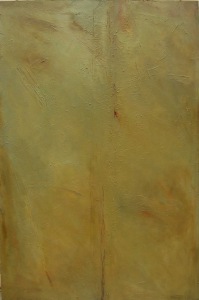This ongoing interrogation into concepts of borders has not, so far, been straightforward. This is not surprising, like any contemplation of ideas of consequence (I don’t mean mine…), there are never simple answers, and the more you look, the more daunting it becomes. Even at a very shallow face value, answering questions such as “should national borders exist?” (yes, sometimes, no…), demands that you take some position. And it’s unlikely, that with any iota of thought, that one might land on Lennon’s Imagine stance with anything other than an immature drifting through lala-land. Maybe I’m just not “dreamer” enough. It seems reasonable, that if you have a nation-state, and that you have a functional relationship with the mechanisms and structures that maintain its workings and ideologies, then you also have something to defend, and some form of boundary in this regard is worthwhile.
It is equally obvious that achieving that relationship, for many people and many parts of the world, is just as “dreamy” as Lennon’s Imagings.
Like most artists, I provide limited explication of my work. David Hockney suggests that the artist should protect some of the mechanisms of their work leaving elements of mystery – perhaps in the manner of a magician. I don’t presume to be in Hockney’s league, mind, or even in the same game, but I do feel that over-explanation becomes limiting, rather than opening. The work Carving Lines is the first of the border works to be exhibited, currently showing at Gallery Delta. What follows is not an explication of the work, but a scant scratching around some of the ideas inherent in the piece.
As mentioned in previous posts, my thoughts emerged with the conception of the current national boundary and the manner in which it was created. We know that there were already divisions and territorial conflicts in the region prior to this point, but the 1884-85 partition resulted in divisions being codified on a map. The map stands as a move towards an “agreement”, or symbol or tool to determine and endorse who “owned” (maintained/administered) what part of the geography. The map becomes a locus for interrogation of these ideas, controversial as they are. Obviously, that it was created and imposed on the indigenous inhabitants with extraordinary disregard, should be the overriding line of enquiry through which everything else is considered – it has been my intention that the general character of the work suggests the violence of this event.
I am intrigued by the idea that these territories were conceived (carved up/allocated/grabbed?) from a remote and mediated position – whilst the means in which this was achieved has changed considerably, the manner in which we understand territories via Google Earth, or similar, echoes the process and secondary understanding (if not the motive). I have a fascination with maps, marking trails and hikes and virtually exploring various geographical locations. My experience in this regard underpinned the idea that it is possible, with limitations, to garner an experience of a place virtually. As I explored Tuli in this way, I became aware that my “gaze” in some ways related to the processes of possession, exploration and experience of that location.
The bottom layer of the work, blackened in bitumen, evolves from my own conceptions of the Tuli circle through that process (Tuli as a starting point is discussed here). It refers not only to my own experience, but refers too to that initial mediated experience of the 1880s and ’90s. The colonial gaze. The processes of virtual experience removes the human element from the imagery, and I had some concern that in a similar way to the colonial landscape paintings which often presented the landscape as uninhabited, my own work has arrived with similar lack of human representation as though they are not part of this discourse. Whilst that aspect is worth some discussion, I think that looking backwards, whilst the this is a positive aspect, as it precludes the possibility of me attempting to speak of another person’s experience or history. The mapping involved in that layer of the work established not only aesthetic elements, but provides an underpinning – perhaps a literal base layer to the ideas.
The horns were a starting point for me, and have since evolved into something different. They initially acted as a visual metaphor, deriving from the oxen at the Tuli circle, but with many possible meanings emerging from that. The actual cleaning of them needed a YouTube education (along side “how to clean the speed sensor of a Toyota Prado”, “how to re-connect the cable to the gear shifter of a Toyota Harrier”, how to self-heal an achilles tendon, how to cope with Long Covid, and why, apparently, the underlying cause of any pain is cancer…), thankfully, as always, the educators obliged. I found that I faced ethical questions with regard to working with animal products, but to some extent, the physical engagement with the horns seemed to muffle some of that nagging. Perhaps, in the manner of a meat-eater that erases from the mind the sight of cows heading to the abattoir (a personal and common experience), I just got on. As the horns were cleaned, it was fascinating to uncover the visual attributes of the objects, and I was pleased with the way the line of the tear within the wire, the central rent of that layer could be aligned with the markings – whilst the work has a more sculptural form, I felt I was painting, but in 3D.
Anyone familiar with my work will know the constant presence of the razor wire over the past couple of years. I this instance, it forms a central layer. A marking on a map is a symbol, but it is “useless” (depending on objectives) unless it corresponds with a practical or physical reality – I suppose, that is what a map is. The wire makes reference to that physical entity; the boundary, the border, the division, the carving. That which determines who is inside, and who is out. Who am I, and who is the “other”. It points to the question of who controls the opening and closing and who may proceed across this line. It asks, how are these crossings facilitated, when are they legal/illegal, what are the requirements to make a crossing – who should administer these requirements, and to what extent are these enabled. These are complex questions, they point not only to physical realities, but to ideas of rights and the relationship of the individual to the state. In this regard, they also enquire of the nature of the crosser, this is a two way experience. These are not, it seems, questions that might be dismissed with an imagining of “no countries”.
I shall conclude with the observation of the fact that the work is described with a third dimension, a 30cm measurement. It is not a map, nor a line on a map. As Francis Alÿss demonstrates in his exceptional work The Green Line , a line on a map represents a dimension – one that might take a period of time to cross. The crossing is a process, not a moment of singularity. That passage itself is a period of enquiry. Border theorist Johan Schimanski 1 observes that a border represents not only a boundary, but an opening, that it’s crossing reveals a passage. There is a transformation of the border as it is crossed, and this necessarily has a transformative affect on the crosser. Once crossed, we do not conceive of the border in the same way. Each of the layer of my work has an opening; the blackened maps and bitumen are created on bamboo mats that have a transparency, the wire is torn from top to bottom and the horns echo this opening. These ideas are begun here, within the third dimension – this is a work that incorporated levels of looking, and in doing so, one engages with that process of time, and it is hoped, with the ideas lightly scratched out above.
Greg Shaw,
20 June, 2021, Harare.
- Schimanski, Johan. (2011). Crossing and reading: Notes towards a theory and method. Nordlit. DOI: 10. 10.7557/13.1835. Available at: https://www.researchgate.net/publication/33417018_Crossing_and_reading_Notes_towards_a_theory_and_method(Accessed 4 February 2021).















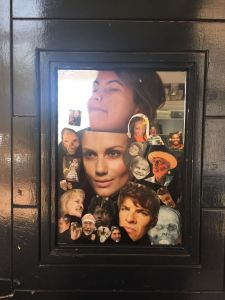




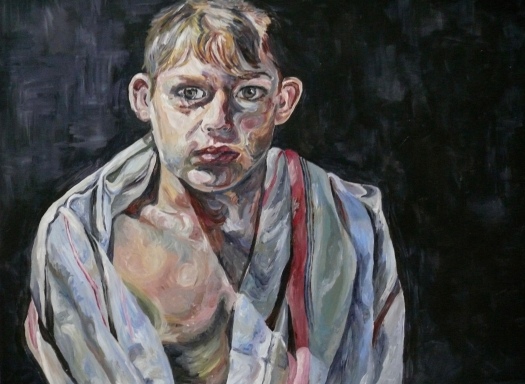



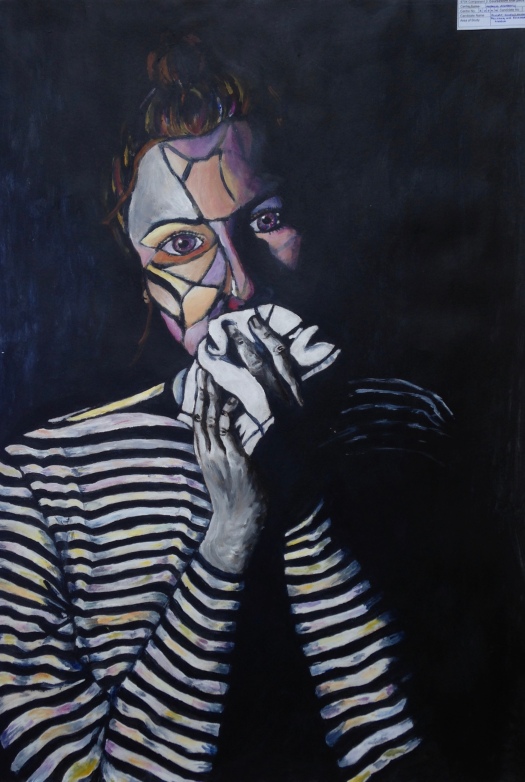
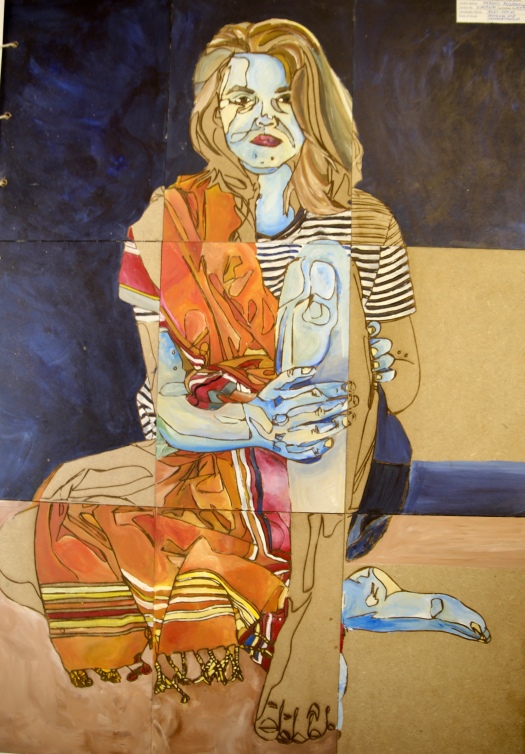






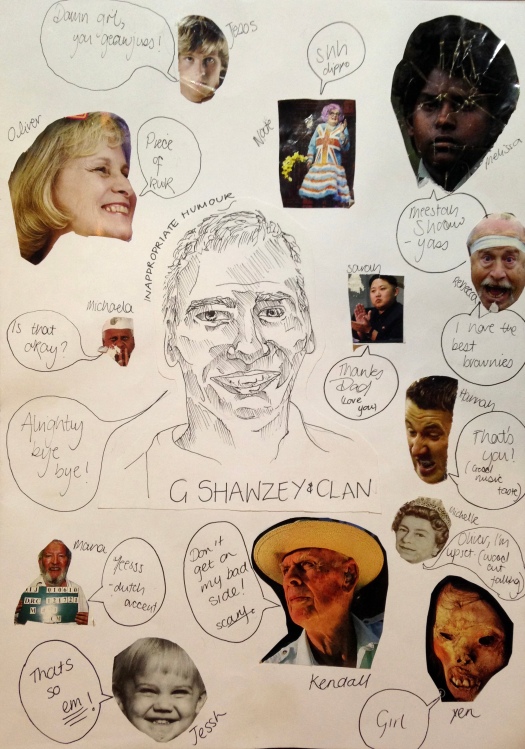




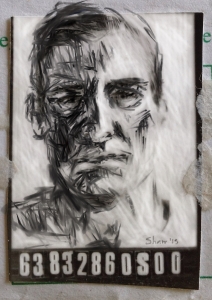




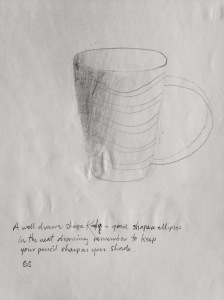


![Kayla, Chongolongo [sic]. Mixed media, A2.](https://gregshawzw.files.wordpress.com/2015/11/cab907d4047bc3b4de479964a86fe784.jpg?w=225)


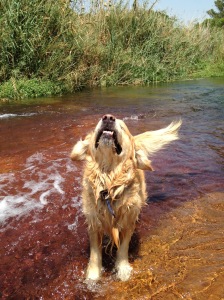

















 I took the Lower VI to the Delta to see the exhibition and draw from the artefacts. They are a demented group. Though I am generally slightly on edge, apprehensive about what may transpire at any given moment, they are lively and entertaining.
I took the Lower VI to the Delta to see the exhibition and draw from the artefacts. They are a demented group. Though I am generally slightly on edge, apprehensive about what may transpire at any given moment, they are lively and entertaining.